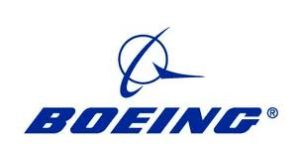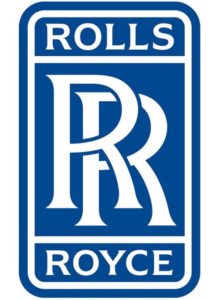Leeham News and Analysis
There's more to real news than a news release.
Transcript: RR told Boeing before end of 2018 it’s out of NMA competition
Feb. 28, 2019, © Leeham News: The announcement today by Rolls-Royce that it has withdrawn from the competition to provide an engine for the Boeing New Midmarket Airplane came as a surprise.

Warren East, CEO of Rolls-Royce. Source: Youtube.
This leaves CFM and Pratt & Whitney as the remaining competitors.
RR’s withdrawal wasn’t the only surprise.
CEO Warren East revealed Boeing had been notified shortly before the end of 2018.
Airbus appears poised to launch A321XLR
Subscription Required
Introduction
Feb. 25, 2019, © Leeham News: The longer Boeing dithers on launching the New Midmarket Airplane, the harder it is to close an already difficult  business case.
business case.
News last week that Airbus finally, at long last, is appears about to launch its Xtra Long Range A321XLR this year is overdue. Doing so will make Boeing’s NMA business case more difficult to close.
The aircraft should have been launch in late 2017, an insider told LNA recently. But the corruption scandals enveloping Airbus disrupted plans and drove executives to indecision. Launching the A321XLR was put on hold.
Summary
- Killing the NMA.
- A321XLR details.
- Narrow market.
- Engine down select soon.
Pontifications: March is a critical month for engine OEMs
Feb. 25, 2019, © Leeham News: Even as Boeing put off a decision whether to launch the New Midmarket Aircraft until 2020, next month could be an important milestone—not only for the program but especially for the engine makers.
Unless delayed, engine down-select is supposed to be made in March.
This is a critical decision that could have huge implications to one of the engine OEMs—Rolls-Royce.
Launching the NMA could mean new business model for Boeing
By Dan Catchpole
Feb. 14, 2019, © Leeham News: Commercial aerospace’s super cycle is alive and well—and looks to keep going through the foreseeable future. Major suppliers and OEMs, and industry analysts at the Pacific Northwest Aerospace Alliance annual conference are all optimistic about the industry demand. Analysts noted potential concerns, such as a trade war with China, a catastrophic terrorist attack, or an economic shock. However, even the often bubble-bursting Richard Aboulafia, an aerospace analyst and vice president at the Teal Group, said the party likely will keep rolling on for several years more.
 Amid such a sunny forecast, Boeing is weighing whether to overhaul its commercial aerospace business model, said Kevin Michaels, a co-founder of AeroDynamic Advisory.
Amid such a sunny forecast, Boeing is weighing whether to overhaul its commercial aerospace business model, said Kevin Michaels, a co-founder of AeroDynamic Advisory.
The company is working to close the business case on a new midmarket airplane (NMA), already dubbed the 797 by industry watchers. The NMA—or, if Boeing does not launch it, then its next single aisle airplane—likely will usher in “the next evolution of the jetliner business model,” Michaels said.
The new model, he said, has four key aspects:
- Greater vertical integration and in-sourcing work;
- Targeted, yet aggressive expansion of services;
- Redefining supplier relationships to capture more aftermarket revenue; and
- Introducing model-based systems engineering.
Boeing expects another banner year for customers
By Dan Catchpole
Danieljcatchpole[at]gmail[dot]com
Feb. 13, 2019, © Leeham News: Boeing Commercial Airplanes expects another banner year in 2019, Randy Tinseth, BCA vice president of marketing, said Tuesday at the PNAA conference.
The airplane maker expects its customers to make about $36 billion in profit this year, he said. That would make five consecutive years of BCA customers recording more than $30 billion in profits.
Tinseth declined to comment on the company’s decision to delay possibly launching the New Midmarket Airplane (NMA) to 2020. However, as Boeing CEO Dennis Muilenburg noted during the Jan. 30 earnings call, Boeing likely will seek authority to offer this year from its board of directors.
He did say he was surprised to hear so many people already referring to it as the 797.
“I can tell you one thing—that has not been discussed,” Tinseth said.
Countdown to NMA decision, Part 4: Time out
Subscription Required
Feb. 4, 2019, © Leeham News: It’s time for Airbus to launch the A321XLR.
Boeing last week announced a program launch for the New Midmarket Airplane won’t come until 2020 at the earliest.
Authority to Offer (ATO) may come as early as March or April. It had been widely expected a program launch would be announced at the Paris Air Show in June.
Airbus has been mulling the XLR launch since 2017. Inside information says a November 2017 launch was planned when all the distractions over the corruption scandals, coupled with key executive retirements, overwhelmed events.
Fifteen months later, Airbus dithers while Boeing vacillates.
Key customers shrug off Boeing’s 2020 NMA launch date
Jan. 30, 2019, © Leeham News: Key customers and suppliers shrugged off Boeing’s announcement today that a program launch for the prospective New  Midmarket Aircraft won’t come until 2020.
Midmarket Aircraft won’t come until 2020.
If Boeing goes ahead with the NMA, a decision yet to be made, an announcement was widely expected at the Paris Air Show in June.
Authority to Offer (ATO) the airplane for sale may still come as early as March or April.
Rolls-Royces sees NMA “addressable” market as 4,000-5,000, same as Boeing
 Jan. 22, 2019, © Leeham News: Rolls-Royce sees an “addressable” market for the Middle of the Market Aircraft at between 4,000 and 5,000 over 20 years—the same size Boeing sees.
Jan. 22, 2019, © Leeham News: Rolls-Royce sees an “addressable” market for the Middle of the Market Aircraft at between 4,000 and 5,000 over 20 years—the same size Boeing sees.
But at the Airfinance Journal annual conference today in Dublin, an executive declined to be specific about the details of this assessment.
Read more
Countdown to decision on Boeing’s NMA, Part 3: Engine selection
By Dan Catchpole
Subscription Required
Introduction
January 21 2019, © Leeham News: Boeing number crunchers are feverishly working through engine bids from Rolls-Royce, Pratt & Whitney and CFM International, the partnership of Safran and General Electric (GE), the three competitors vying to power Boeing’s New Midmarket Airplane (NMA). Boeing is expected to ask for a best and final offer by the end of January, with engine selection planned in February.
That gives Boeing enough time to get authority to offer from the board of directors, likely in March or April, and to launch the NMA (likely as the 797) at the Paris Air  Show in June.
Show in June.
Boeing faces big challenges in closing the business case, though. The process has slogged on far longer than company leaders had expected. Even so, Boeing executives’ relentless optimism about the NMA business case stands in sharp contrast to the skepticism of many industry insiders. At least two of the engine makers, for example, think market demand is about half of Boeing’s public forecast.
Each of the three engine makers vying to get on the NMA have some significant liability. The industry insiders and analysts interviewed for this article say is the decision really comes down to Pratt and CFM. Given the pressures on NMA business case, many see a scaled-up CFM Leap as the front runner. It offers the least risk, even if it also has the least upside.
Summary:
- CFM: The LEAP has performed well since going into service, but GE’s financial troubles could weigh down its bid.
- Pratt & Whitney: PW’s GTF is a great fit for NMA requirements, but the engine maker has a full plate with the GTF on five new airplane programs.
- Rolls-Royce: The NMA would be an opportunity to launch Rolls’ UltraFan, but does Boeing want to bet on a completely new engine?



